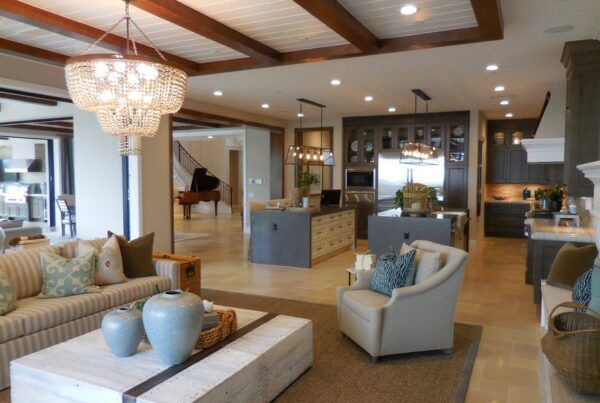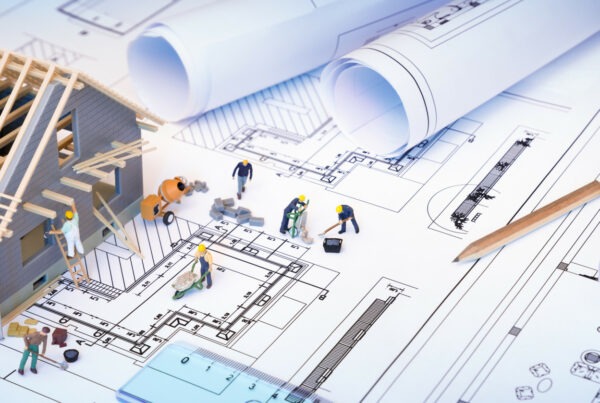
Each year, about 358,500 homes in the US experience a structural fire.
Few experiences are as scary as a fire in your home. It can cause severe injury, death, or devastating property damage. It’s the reason fire safety needs to be on top of your wishlist when building a home.
But exactly how do you go about fireproofing your home? If you’re asking that question, you’ve come to the right place. In this guide, we outline six actionable tips on building fireproof homes.
Read on to learn more.
Choose Fire Retardant Materials
Some home-building materials tend to be more vulnerable than others when it comes to fire. During your construction project, opt for concrete panels and brick or stucco for the exterior walls. Metal and concrete are good choices for the roof.
When it comes to windows and doors, opt for steel framing. Consider double-pane glass for its ability to hold up longer than single-pane glass in the event of a wildfire.
Tempered glass has also been shown to withstand heat much longer than standard plate glass. It also helps to avoid acrylic skylights as they tend to melt quickly during a fire.
You can also opt for fire retardant paint for both the exterior and the interior of your home. Choose fireproof curtains and carpets as well.
For your deck, you can go for fireproof construction materials like concrete, stone, tile, or brick. Avoid wood as it’s more vulnerable to fire.
Of course, if you’re fireproofing an existing home, the changes above can be added during your home remodeling projects.
Invest in Enough Smoke Alarms
There’s a reason that the National Fire Protection Association (NFPA) has a requirement that homes have enough smoke alarms. That means having a smoke alarm in at least each sleeping room in your home, as well as other areas. Unfortunately, many homes built earlier don’t meet these standards.
Smoke alarms are designed to provide an early warning whenever there’s a fire inside your house. This way, people inside the home can react quickly and appropriately.
These days, you can even find smart smoke detectors that send an alert to your smartphone besides just beeping when they detect smoke. Consider making these alarms part of your custom home features during your upcoming home upgrade.
Be sure to locate smoke alarms away from air vents, and charge their batteries regularly. Test the alarms from time to time to ensure they’re still working.
Invest in a Fire Extinguisher
A fire extinguisher is a low-cost investment that can make a world of difference in the event of a small kitchen mishap. It can help you successfully contain small flames in your house instead of having the entire home burn down.
Extinguishers come in different types and sizes. Ensure you understand the differences between these extinguishers and how to use the ones you invest in. Place the extinguishers strategically too.
Install Fire Doors in the Right Areas
House fires tend to spread extremely quickly, engulfing an entire home in just minutes. However, it’s easy to minimize the damage fire and smoke can cause by installing fire doors in strategic areas in your home.
A fire door holds back the flames, heat, and smoke in the event of a fire, protecting the escape route so people inside the house can get out safely. Some of these walls can hold back fire for up to an hour, which is enough time for everyone to escape from the burning house.
Keep Some Rooms Detached From the Main House
This fireproofing point is especially applicable if your home is located in a rural area where there’s considerable space in your compound.
Many fires start as vehicle fires. That’s why it may be a good idea to have a detached garage.
Keep in mind that garages often contain flammable materials, including gasoline and paint thinners. When the garage remains detached from the house, you may avert a bigger loss.
Create a Fire-Proof Landscape
Wildfires and other fires that originate from outside are often best thwarted when you prevent them from reaching the walls of your home in the first place. One way to do so is by deliberately using a gardening design that slows down or stops the fire from spreading towards your home.
Consider using hard landscaping around your home. Stone, gravel, and concrete are excellent options.
You can also consider clearing all dry leaves and vegetation from around your house, especially during the summer months.
If you love having plants in your compound, opt for species that are more fire-resistant, such as honeysuckle and lavender. When used for soft landscaping, these plants considerably slow down the spread of fire.
Always keep your lawn well-watered, especially in the summer. A lush, green lawn burns more slowly.
For homes with a fence, it’s best to avoid using more flammable wooden fencing. Like an incendiary fuse, these fences can lead flames from outside directly to your home. Opt for metal or masonry instead, as these fencing materials can act as a firestop.
If you live in a gated community, it also helps for the perimeter to have provisions for emergency override of gates that may restrict emergency vehicles and firetrucks during a fire.
Building Fireproof Homes Can Help Avert Disaster
At a time when house fires are so rampant, building fireproof homes is a necessity. These homes can help avert damage to property, bodily injury, and fatality. As you’ve seen in this guide, anyone can make their homes a little more fireproof by taking just a few practical steps.
Are you interested in making your home safer for you and your loved ones? Please, contact us today to learn how we can help.




